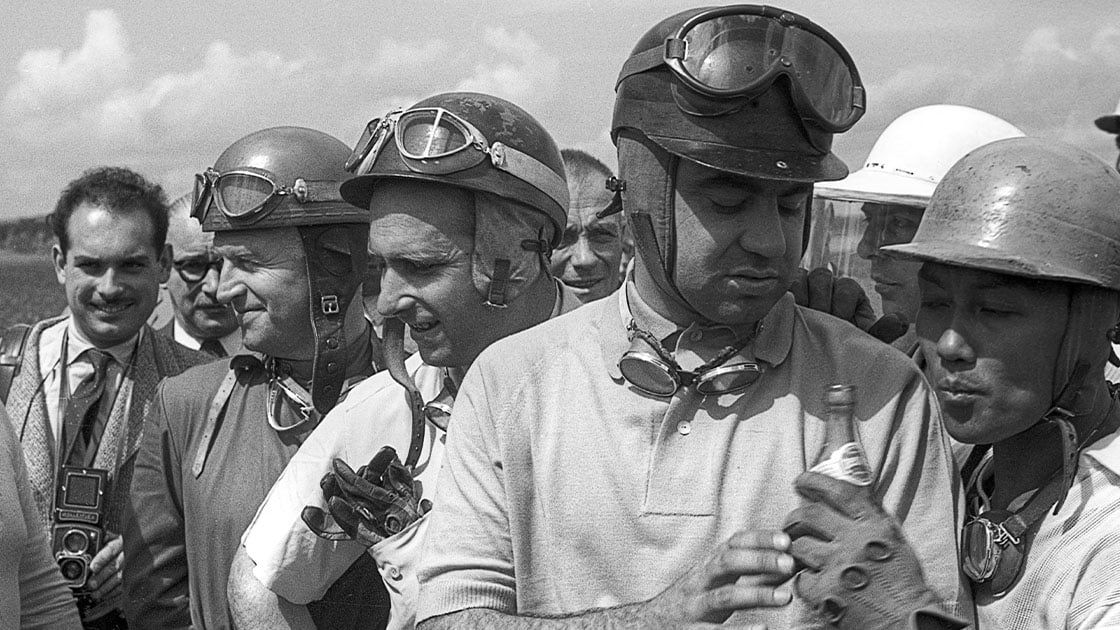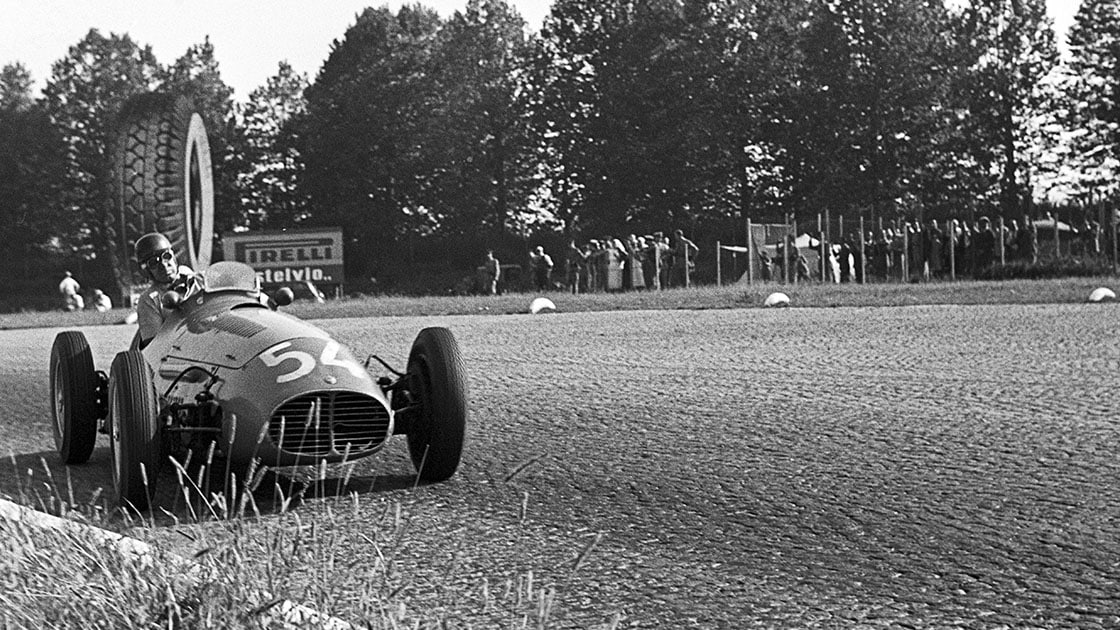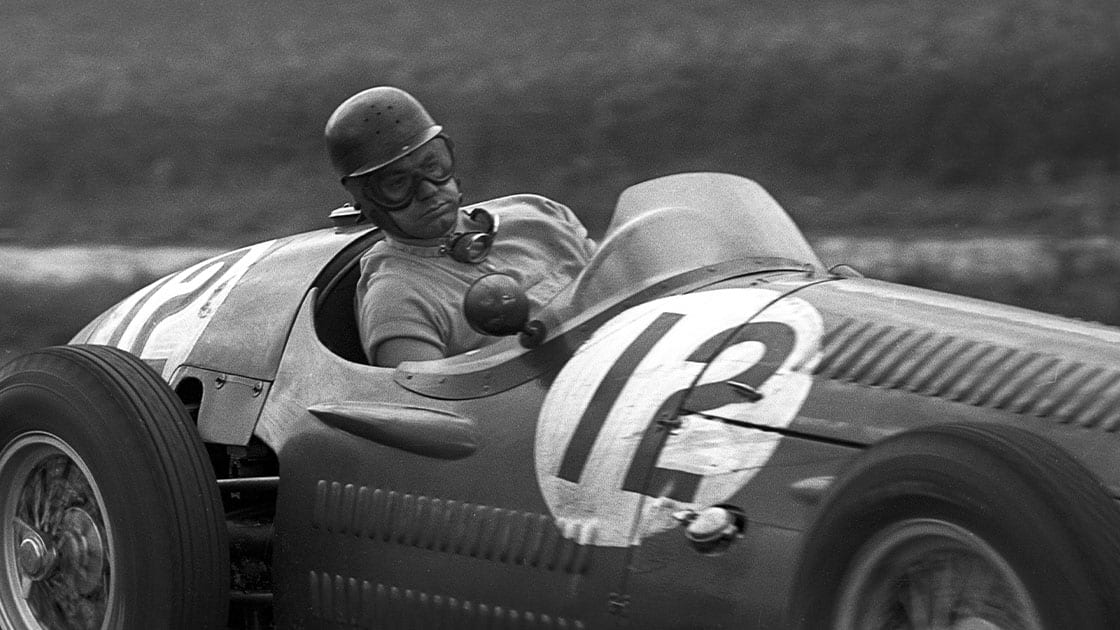With his sights set on single-seaters, an opportunity cropped up from his father’s friendship with Fangio. The latter had flown to Europe in 1950 for his first season with Alfa Romeo, leaving his single-seater (a Chevrolet/Wayne-powered Volpi) in Domingo’s hands. At that year’s season-opener on the streets of La Cumbre, Domingo told his son that whichever of them proved quicker in practice would race the car. Onofre put the car on pole position and never looked back, taking his first Mecánica Nacional win. Other victories were to follow, leading the Automóvil Club Argentino to offer him one of its Maseratis — a 4CLT — for the end-of-season race at Paraná, where Fangio won and he finished fourth. His second outing with the car, in neighbouring Chile five weeks later, ended in retirement
The first half of 1951 saw him take the Volpi to a win and two second places. But then Fangio sensed an exploratory trip to Europe would do Onofre no harm and opened some doors for a drive aboard a Maserati 4CLT-Milano for this young buck who he once described as being “like a son for me”. Onofre’s maiden Grand Prix wasn’t a success, as a broken engine in the French Grand Prix made for the briefest of world championship debuts. There were other outings in Europe that season, one which led to retirement in the Le Mans 24 Hours, sharing a Talbot-Lago with González, and another at Modena, where he finished eighth in a privately-entered Ferrari, after losing time in the pits.
Onofre spent most of 1952 in Argentina, continuing his winning ways aboard the Volpi, narrowly missing the Mecánica Nacional title at the final round and also opening a car dealership. Very much a family man, there was the future of his wife and two children to consider. Talking of the younger ones, he was very good to the less well-off children of his town, bringing them books and toys when he returned from abroad. For most of that year, though, he was organising a return to Europe, and towards the end of the year he was ready for a first full season abroad — a works-assisted drive with Maserati for 1953.

With Fangio to his right and Bira to his left before the ’54 French GP
Bernard Cahier/Getty Images
Prior to the first outing with the grand prix car, he was Fangio’s co-driver in one of the ‘Disco Volante’ Alfa Romeos that were entered for Le Mans, although the car retired early on and he didn’t get to race it. The Maserati was ready for the world championship round at Spa-Francorchamps where, on his first visit to the challenging circuit, he finished a fine third as the first Maserati home, behind the Ferraris of Ascari and Luigi Villoresi. Two weeks later, at the French Grand Prix, he formed part of the leading eight or nine-car slipstreaming battle, but salvaged only ninth after oil radiator trouble.
Retirements followed this promise in the British, German, Swiss and the (non-championship) Caen Grands Prix, after which he co-drove a Maserati A6GCS with Emilio Giletti in the Nürburgring 1000Km. Facing entries from Ferrari, Lancia and Ecurie Ecosse, the Italo-Argentinian duo hauled the nimble 2-litre car up to second place, but its engine failed near the finish. Two weeks later came that world championship season-closer at Monza, in which he fought for the lead with Fangio, Ascari and Farina until his car hit mechanical bothers. Second place, behind Fangio, at the Modena Aeroautodromo the following Sunday provided some comfort, before returning home.
“His charge through the field at Silverstone was meteoric”
With Mercedes-Benz’s cars not ready for the start of 1954, Fangio remained at Maserati and won the Argentinian and Belgian Grands Prix. Onofre retired on both occasions, but was busy contesting four non-championship races between those two events. Pole position at Syracuse — ahead of the works Ferraris of Farina, González and Hawthorn — was a good start to the season abroad, and despite little help from his Maserati’s clutch he was vying for Farina’s lead until crashing into retirement. A week later, he retired while lying third at Pau, was then fourth at Bari, and at the beginning of June claimed what was to be his single victory in Europe, starting from pole and dominating at Castel Fusano, venue of the Rome Grand Prix, an event that Ferrari didn’t attend. A fortnight later, his second visit to Spa was a contrast, as despite qualifying fourth behind Fangio, González and Farina, engine trouble brought retirement after just three laps.
Fangio and Onofre co-drove once that season, when they raced a 250S/6C Maserati in Monza’s Supercortemaggiore 1000Km, and master and pupil ran in second place until the car’s rear axle broke shortly before the finish. Next up was the French Grand Prix at Reims, where Onofre started from the second row, just behind his new team-mate Ascari, who had been drafted in on a provisional basis from Lancia. Onofre held on to fourth place in the early laps, then stopped at the pits to cure a misfire and retired at mid-distance with gearbox trouble. With three world championship rounds run, he had no points to his name.
Then, a fortnight after the French Grand Prix, the Maserati transporter arrived at Silverstone for the British Grand Prix too late for qualifying. This meant that Onofre would have to start the race from the penultimate row of the 30-car grid. His charge through the field was meteoric and although he could do nothing about the Ferraris of González and Mike Hawthorn, he finished in a strong third place, seconds ahead of Fangio’s Mercedes-Benz W196 streamliner. Onofre also shared fastest lap with Fangio, Stirling Moss, González, Ascari, Hawthorn and Jean Behra, so things were suddenly looking much better.





